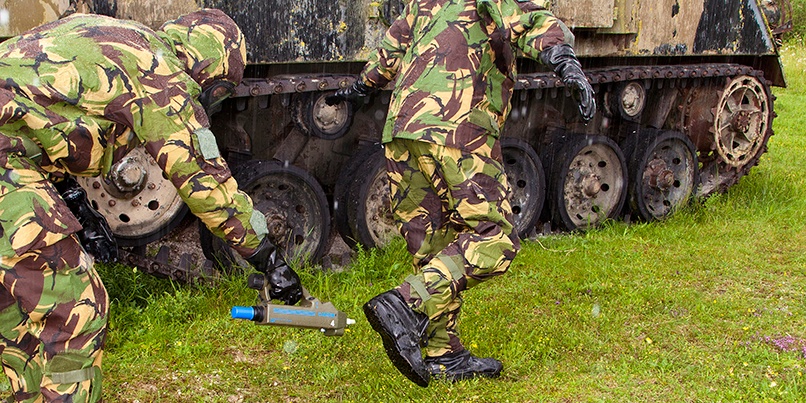
CBRN (chemical, biological, radiological and nuclear) training is essential, to safeguard people and countries from the terrible effects of chemical, biological, radiological or nuclear disasters – whether in the context of warfare, a terrorist incident, or another situation.
Intense and challenging, CBRN training provides students with the skills and expertise they would require in the event of a CBRN incident - when quick-thinking and a measured response are crucial.
There are three main types of CBRN training: live agent training (LAT), simulant agent training (SAT) and simulation training. Each of these invites an in-depth exploration. However, in this post, we will be focusing on simulation training, specifically taking a closer look at the advantages of this method.
Whether simulation training is being carried out by military personnel or emergency services staff, the main driver for using simulators is that you can replicate the ability to detect and monitor a near-invisible or invisible CBRN hazard as it moves through the air or contaminates equipment, infrastructure or terrain.
So, what are some of the key benefits of using simulators for CBRN training?
1. Creates realistic training scenarios
Simulation training is highly realistic. New generations of intelligent, computer-based simulation tools offer a real, workable alternative to conventional training methods. The simulated threat may be implemented either physically, deploying simulation sources, or virtually, using a computer-generated threat system.
While it is not possible to replicate every potential scenario, simulators can nevertheless accurately imitate how real devices react when confronted by a range of CBRN agents, considering the volatility of the agents, the prevailing meteorological conditions and the tactics and techniques used to detect differing agents.
2. Prepares students for LAT
LAT is the pinnacle of CBRN training - real CBRN agents are used, to provide the closest experience to a real CBRN incident as possible. However, this is not the time for students to learn how to use the detectors – when individuals come to LAT, they should already be well-versed on this front. Therefore, simulation training is an excellent predecessor to LAT.
Since simulation training uses realistic, imitation detectors, undertaking this type of training provides students with the capabilities they will require to then participate in LAT. In fact, simulators can be configured to exactly represent real detectors and simulators, thereby providing a "Disney®-type" level of realism and experience for the user.
3. Enables safe and varied training scenarios
As real CBRN agents are not being used, there are no environmental issues or health and safety matters to take into consideration during simulation training. Additionally, it can be undertaken anywhere and a large training area can be set up (and relatively quickly).
As such, trainers can portray a variety of scenarios, including large-area ones, no matter what the weather conditions are, or the location where the training is taking place. This also means that instructors have a method of replicating the same scenario time after time, to determine the correct use of techniques, tactics and procedures (TTPs) by their trainees.
Once the exercise is complete, the simulation sources simply require collecting, after which no evidence remains to indicate that any form of training has taken place.
4. Allows for post-training analysis
The main challenge inherent in simulation training is ensuring that the hazard environment is accurately portrayed, so that no false lessons are learned. However, simulator manufacturers have taken steps to mitigate this risk by designing a built-in after-action review (AAR) capability for their products. This means that simulators can be interrogated after use, to determine if they were operated correctly.
AAR allows for training scenarios to be amended and enhanced, to maximise the learning experience. This ensures that students are as well-equipped as possible if, one day, the worst does happen.
Simulation training helps to prepare students for dealing with CBRN incidents that they may have to face in the future. Its highly realistic nature provides trainees with in-depth knowledge and experience, and readies them for LAT - the peak of CBRN training. Simulation training is safe and flexible, allowing students to participate in a variety of scenarios - ranging, for example, from a chemical attack on a battlefield, to a biological attack on a subway. Finally, the ability to review the use of the simulators post-training ensures that students receive the best possible teaching and can progress, with full confidence in their abilities.
Simulation training has many benefits, but it is still a relatively new learning method for CBRNe incidents. Our Guide to Effective Chemical Warfare Agent Training takes a closer look at other options, including live agent and simulant agent training, and how simulators compare. To uncover which method is most effective, click here to download the guide for free.






